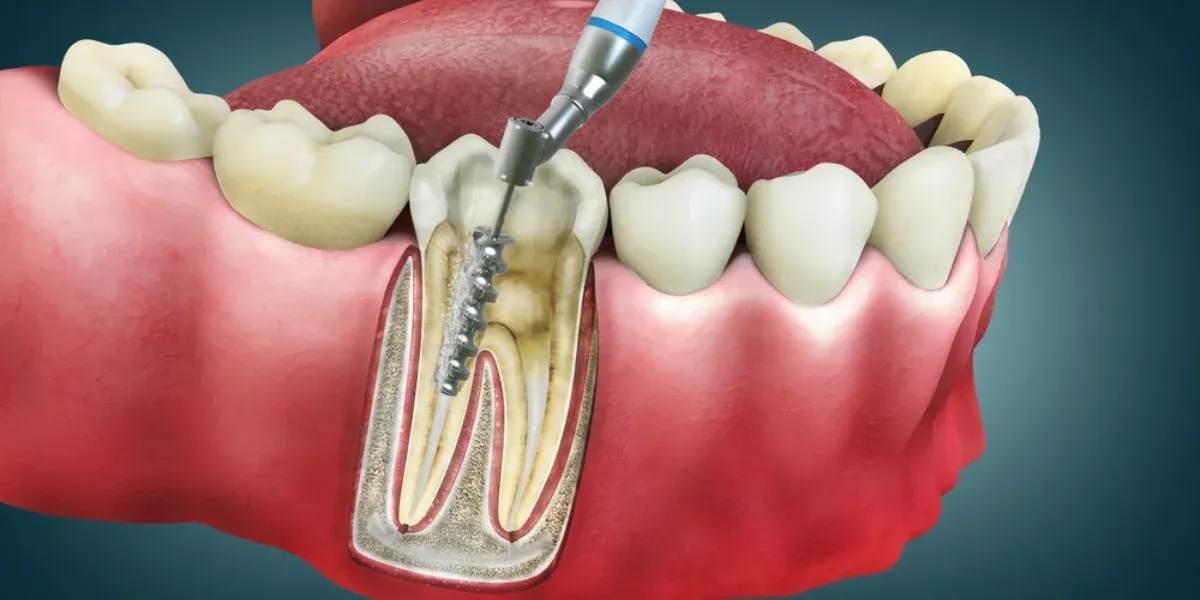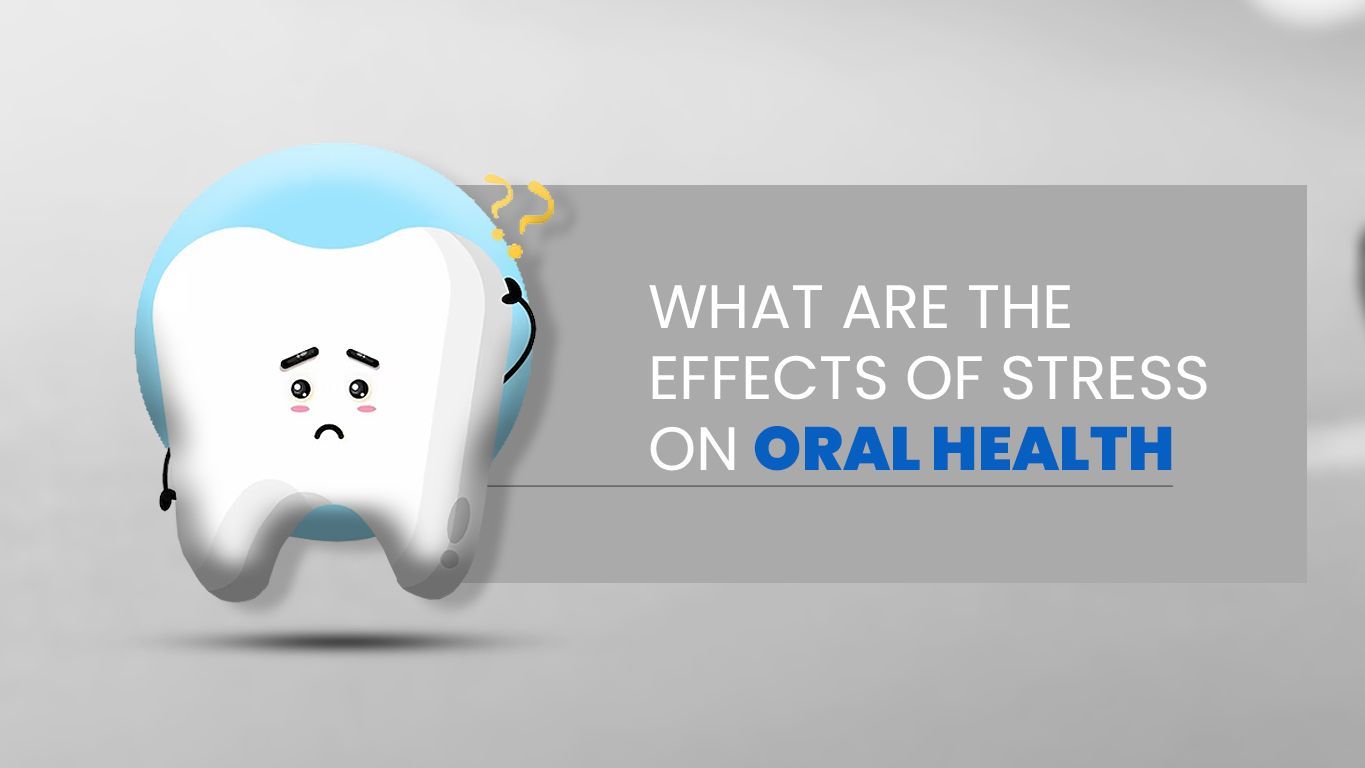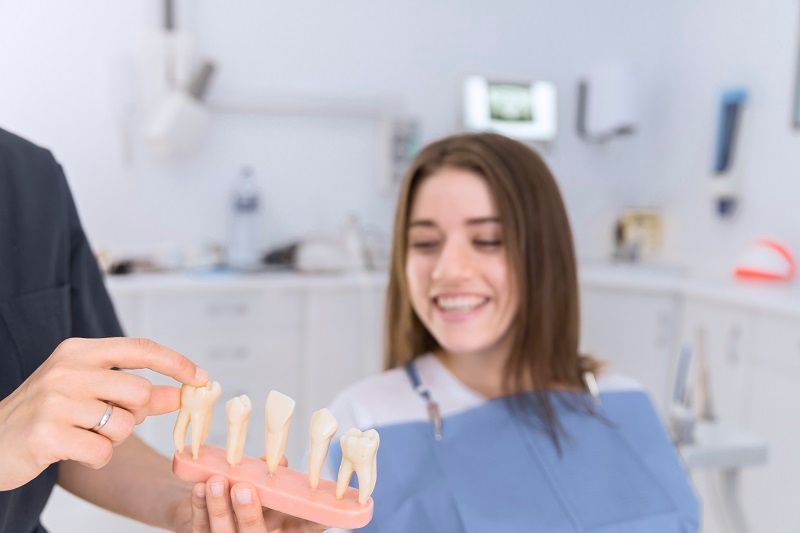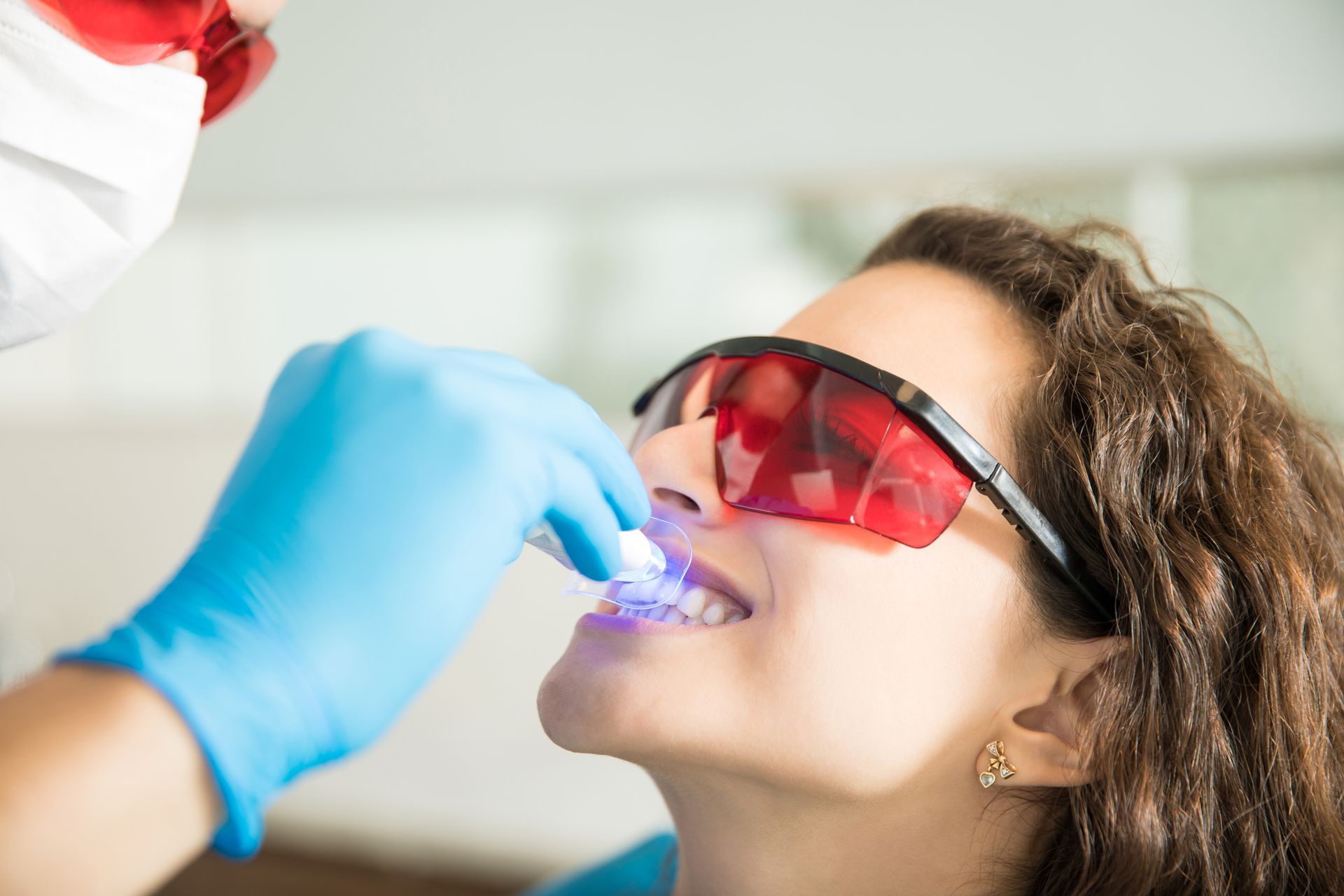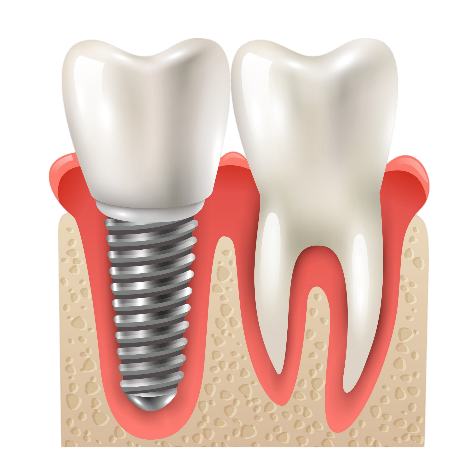The Ultimate Guide to Cosmetic Tooth Crowns, Costs, and More
Same Day CREC Dental Crowns

Cosmetic tooth crowns, also known as dental crowns, are among the most popular dental solutions offered. They are common treatments for people who have severe tooth decay or a broken tooth and are made with materials that allow them to blend in with the rest of your teeth for a seamless smile.
If you feel like you may need a tooth crown, read on. In this article, we’ll explore its purpose, how the treatment works, costs, and more.
What Is the Purpose of Cosmetic Tooth Crowns?
Crowns are used in place of a filling when the tooth is cracked, decayed, or damaged. They completely cover the tooth above the gum. This is a much more extensive treatment than the typical filling, which is mainly used to prevent minor decay from worsening.
Here are the main reasons why dentists recommend crowns :
- There is tooth damage resulting from a large cavity or filling
- It protects your tooth after a root canal treatment
- It improves the look of a discolored tooth
- It covers poorly-shaped teeth
- It’s used to complete dental implants to replace a missing tooth
As you can see, a crown is most used in situations where the dentist is concerned that a weak tooth is about to break or a cosmeticmodification. Some types of partial dentures may require the dentist to lay down a crown on either side of a bridge to support the denture’s framework.
How Much Do Dental Crowns Cost?
Most insurance companies won’t covermore than 50% of the total cost associated with dental crown placement; this is because some treatments are more of a cosmetic rather than a preventive solution.
The final cost you will end up paying depends on your insurance coverage, the specific materials used for the crown, and the rates of the dental clinic you visit.
Here are some rough estimates of what you can expect for costs:
- Porcelain-fused-to-metal crowns: $875-$1,400 per tooth
- Metal alloy crowns: $840- $2,465 per tooth
- Fully porcelain crowns: $800- $3,000 per tooth
If you are willing to have the crown installed at a dentistry school, you may pay significantly less than you would at private practices. For example, patients at the University Of Texas-San Antonio are reported to spend 60% less on average.
What If I Don’t Have Dental Insurance?
If you don’t have dental insurance, there is no need to fret about not being able to take care of your toothache. The
Bureau of Primary Health Care, a U.S. government entity, provides reduced or even free dental care through federally-funded facilities. A summary of entities that support dental care at free or reduced costs can be found here.
Dental Crown Materials & Price
These are the materials most used for dental crowns, ranked in order of price (lowest to highest):
- Porcelain-fused-to-Metal
- Gold Metal Alloy
- 100% Porcelain
In the next section, we’ll cover these different materials in greater detail to help you decide which option is worth looking into.
What Are Dental Crowns Made Out Of?
As we mentioned in the last section, dental crowns can be made from one of three materials. All crowns—no matter the type—are shaped to blend in with the natural teeth adjacent to them, but their color will differ, based on the material used.
Porcelain-Fused-to-Metal
This is a crown material that closely resembles natural teeth and is more durable than those made solely out of porcelain or ceramic because of their metal base.
The drawback: there is some potential for the outer layer of porcelain to wear away and expose a dark line along the gums, though the gums usually must become recessed for this to happen.
Gold
Gold metal crowns are typically reserved for the molar teeth (located at the back of the mouth). The gold metal alloy structure makes these types of crowns quite durable and able to withstand the amount of pressure that the molar teeth receive.
Generally, you wouldn’t want to use gold alloy crowns on any teeth other than the molars, as the color makes them really stand out against the natural teeth.
Stainless Steel
Stainless steel is only used when creating a temporary crown while the patient waits for a more permanent solution. They are usually reserved for pediatric dental crowns to protect baby teeth from decay, although a situation may arise when they may be used for adult teeth. However, in these cases, metal crowns are typically applied to the teeth in the back of the mouth that aren’t readily visible.
Fully Porcelain/Ceramic
Many patients prefer porcelain crowns because their white color intuitively blends in with natural teeth. In recent years, dentists have begun to move away from metal crowns , deeming porcelain crowns to be the more suitable option. This is because not only do these crowns have a more natural look, but they also avoid the potential for patients to undergo allergic reactions to metal alloys.
How Are Dental Crowns Placed?
Dental crowns are installed using a procedure that will likely involve two visits to the dentist. However, same-day placement may be available if the dentist happens to have the materials and equipment on hand to make the crown on-site.
At most locations, dental crowns will likely be installed using the traditional method.
Traditional Method
During the initial visit, the tooth will be inspected so that your dentist can determine whether root canal therapy will be required. During the first visit, any decay present will be removed from the tooth.
Anesthesia, or a numbing solution, will be used in situations in which pain may occur. The tooth needing the crown will be filed down across both the top and the sides so the crown may fit. If an all-metal dental crown is to be installed, then the dentist will not need to remove quite as much material.
After the decay is removed from the tooth, your dentist will use a casting material to make an impression of the tooth. The purpose of this molding is so that the crown will fit over the tooth correctly and comfortably and not interfere with the teeth around it.
A temporary crown will then be placed while the mold is sent to a dental lab for a permanent crown to be created. In about 2-3 weeks or so, the permanent crown will be ready for placement. At this time, you will need to schedule a second appointment for the process.
Same Day CREC Dental Crowns
In clinics where same-day crowns are available, the procedure will be a little different, primarily in how the crown is formed.
A scanning device called a “wand” will be used to take digital pictures of your affected tooth to measure its dimensions. A 3D model of the proposed crown is then created with a connected computer. The code from the 3D model is then sent to a machine that creates a dental crown made of ceramic.
This entire process can be shockingly rapid , even taking less than 15 minutes, so you can have this done in one appointment rather than two. However, unfortunately, you will not be able to choose the crown material if you use the CREC same-day method.
The resulting crown could be less durable than a metal crown, particularly if the crown is located on the molars. But, on the bright side, you won’t have to wait around for the crown to be made in a lab.
Will I Have to Eat Differently If I Get a Crown?
The good news is that you shouldn’t have to change your eating behaviors once you get the permanent crown. In fact, you will most likely feel a lot better and may even go back to eating foods that you began avoiding due to pain.
However, you will need to exercise caution during the time you are wearing a temporary crown. A dentist will fill you in on specific details, but you will probably be encouraged to keep excess pressure away from the site of the temporary crown. You may even be asked to avoid certain foods.
Daily dental hygiene will still be of utmost importance in all teeth, including the tooth with the crown. A watchful eye will need to be kept on the crown's site to ensure that decay does not occur underneath it.
Final Thoughts
If you have been experiencing a toothache, then a dental crown may be the solution to all your problems. This standard dental procedure involves removing all pain-causing decay from the tooth and replacing it with a durable structure that should look strikingly similar to the teeth around it. This is particularly the case with porcelain crowns frequently used for toothaches at the front of the mouth.

